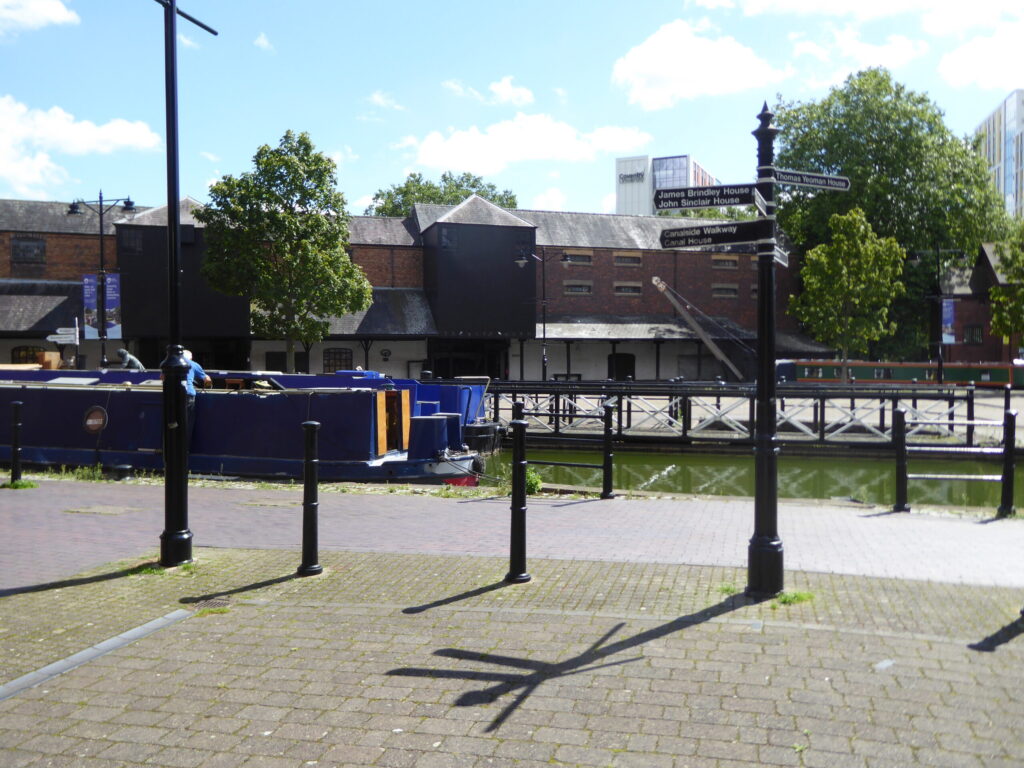
The ghost didn’t turn up for our August tour of the Coventry Canal Warehouses. Apparently, he doesn’t show up much when the warehouses are fully occupied and as they have been pretty much that since they were restored in the 1980s, he doesn’t make many appearances these days.
Our visit was hosted by Alan Dyer, the Chair of the Coventry Canal Basin Trust. The Trust was set up in the late 1970s to promote the protection, restoration and management of the historic warehouses and has been doing just that for forty years.
The warehouses, located on the ancient route from Coventry to Leicester, were built in four phases between 1787 and 1914, with a later extension added by the Trust in 1985.
The ghost is said to have been a worker in the warehouses who died in a fall from one of the top levels. He has been seen twice in recent decades, walking along the waterfront and disappearing at the point where the new building starts. Although not seen much, he is often heard moving furniture in padlocked studios. Alan describes him as “benign but a bit noisy”.
The buildings were restored in the 1980s with the benefit of an Urban Programme grant and were listed at Grade II following the completion of the restoration.
Alan told us that the building was submitted for a restoration prize and only came second. When they asked the organisers about this, they were told that they didn’t win because the assessors weren’t able to tell what had been done to the building. That comment perhaps summarises the quality of the restoration – it isn’t pretty or colourful, but instead it is authentic and genuine.
Today the warehouses are occupied by artists. Forty-three of them occupy twenty-five studios at affordable rents that are designed to retain Coventry University arts students in the city when they graduate. There are also units occupied by the Model Railway Club and the Canoe Club.
The Trust has also created gardens on both sides of the canal to improve the appearance of the Canal Basin.
A group of ten CovSoc members took the tour on 15th August and were fascinated by one of the best examples of twentieth century historic building restoration in the city.
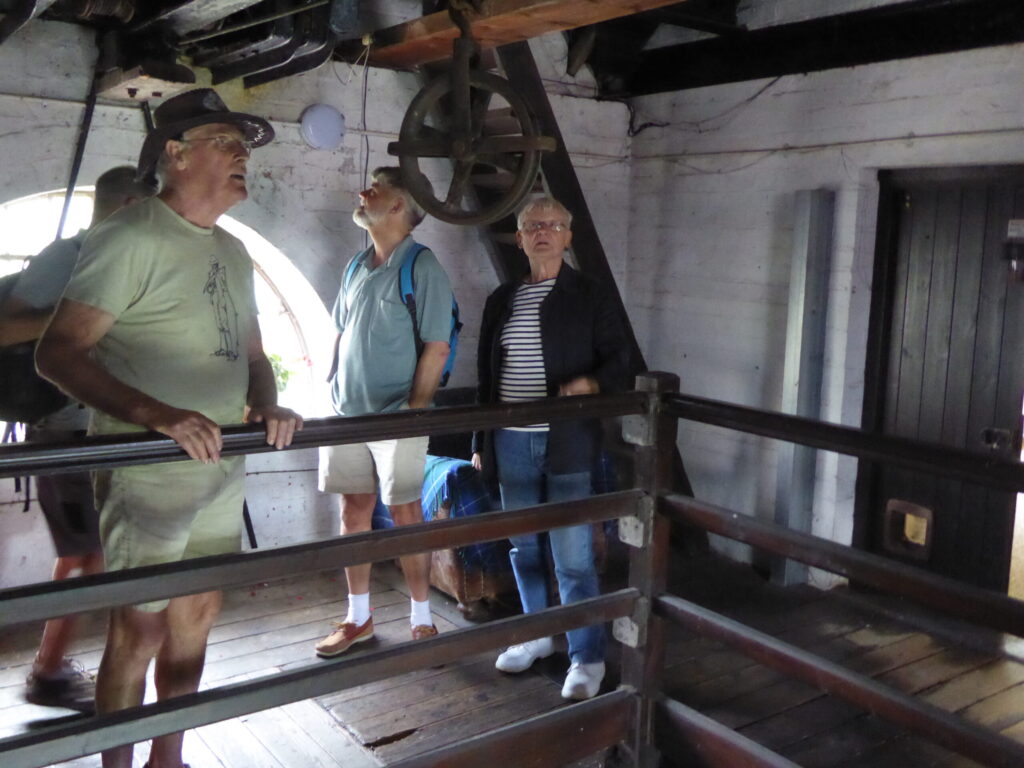
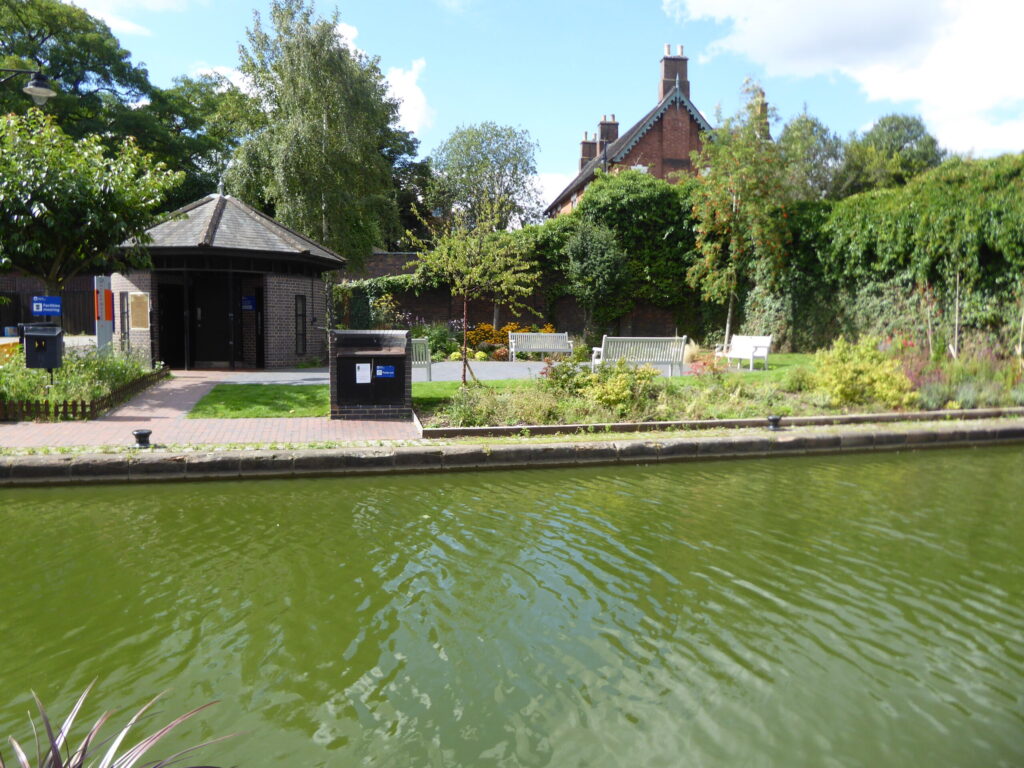
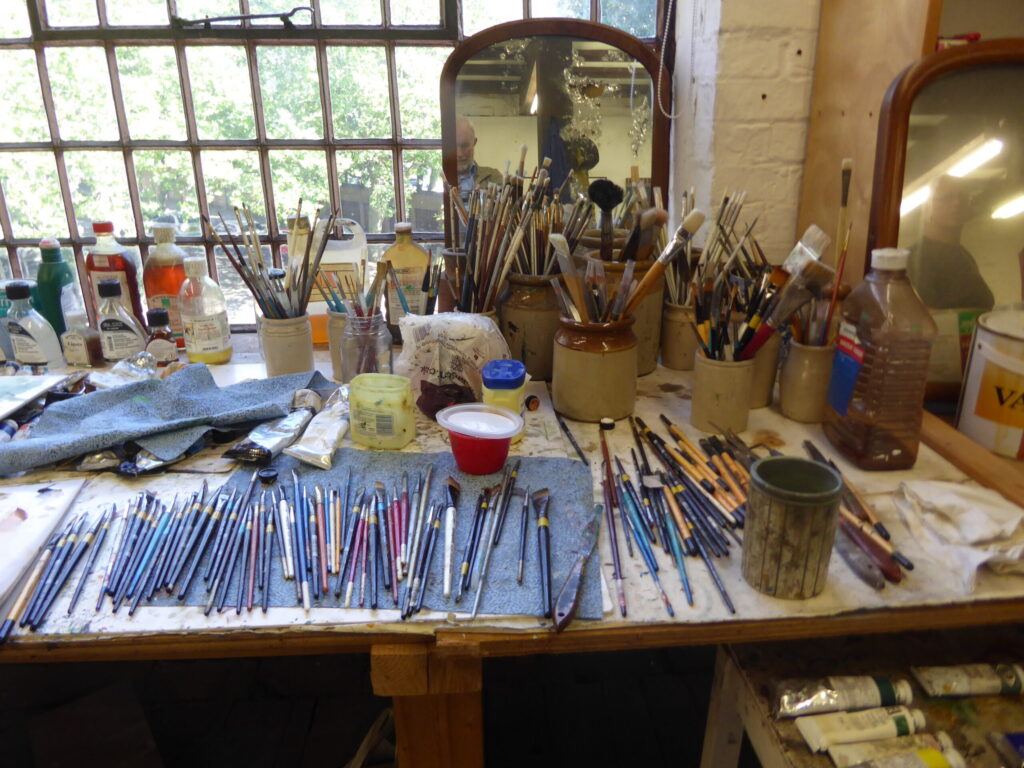
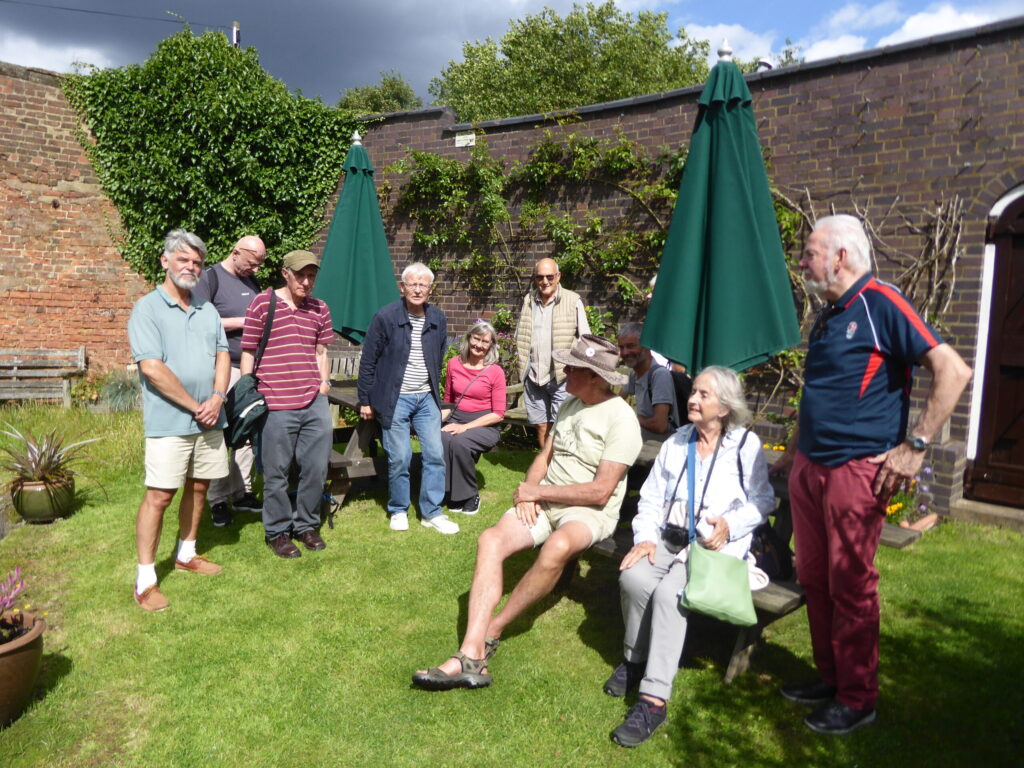
In many ways the restoration was ahead of its time, in that under the guidance of architect Ken Holmes, most of the historic structure was retained and reused. Instead of being converted to a twee pastiche of an 18th Century building, the result is as authentic as it could be and the original purpose of the building can be seen in every step.
Also, the restoration has been sustainable and nearly forty years on it is still providing an important addition to the city’s cultural offering.
There is more about the restoration of the canal warehouses on our website here.
